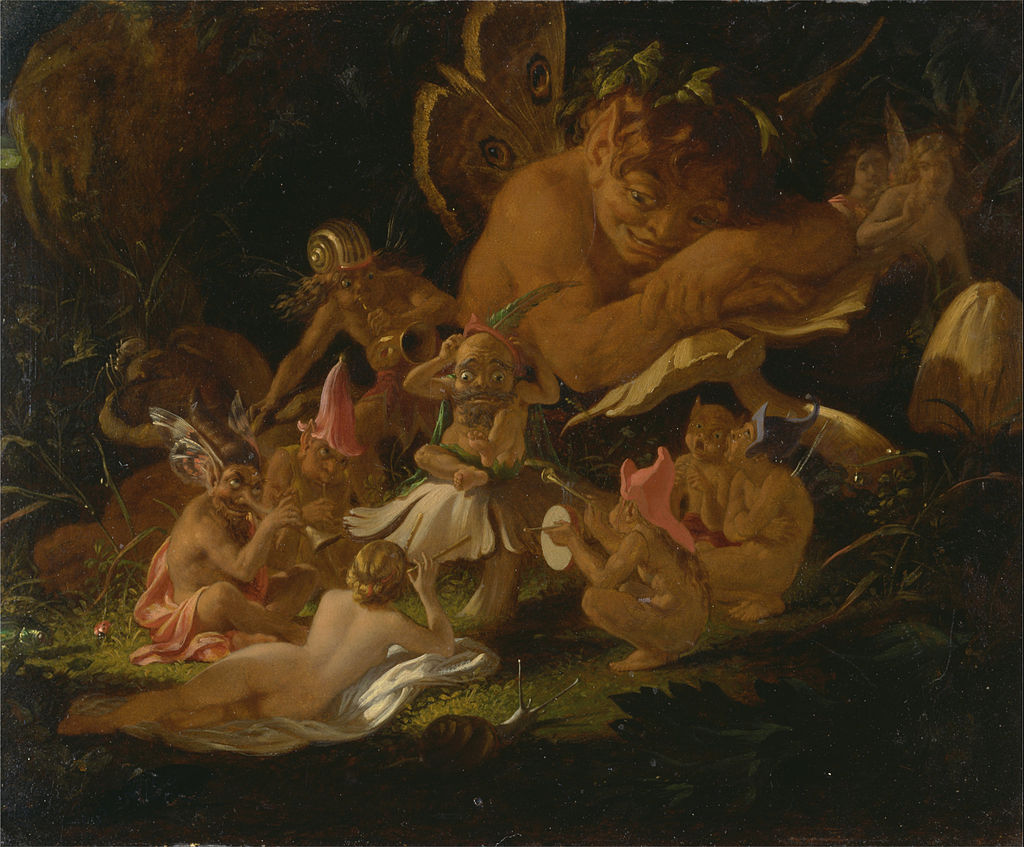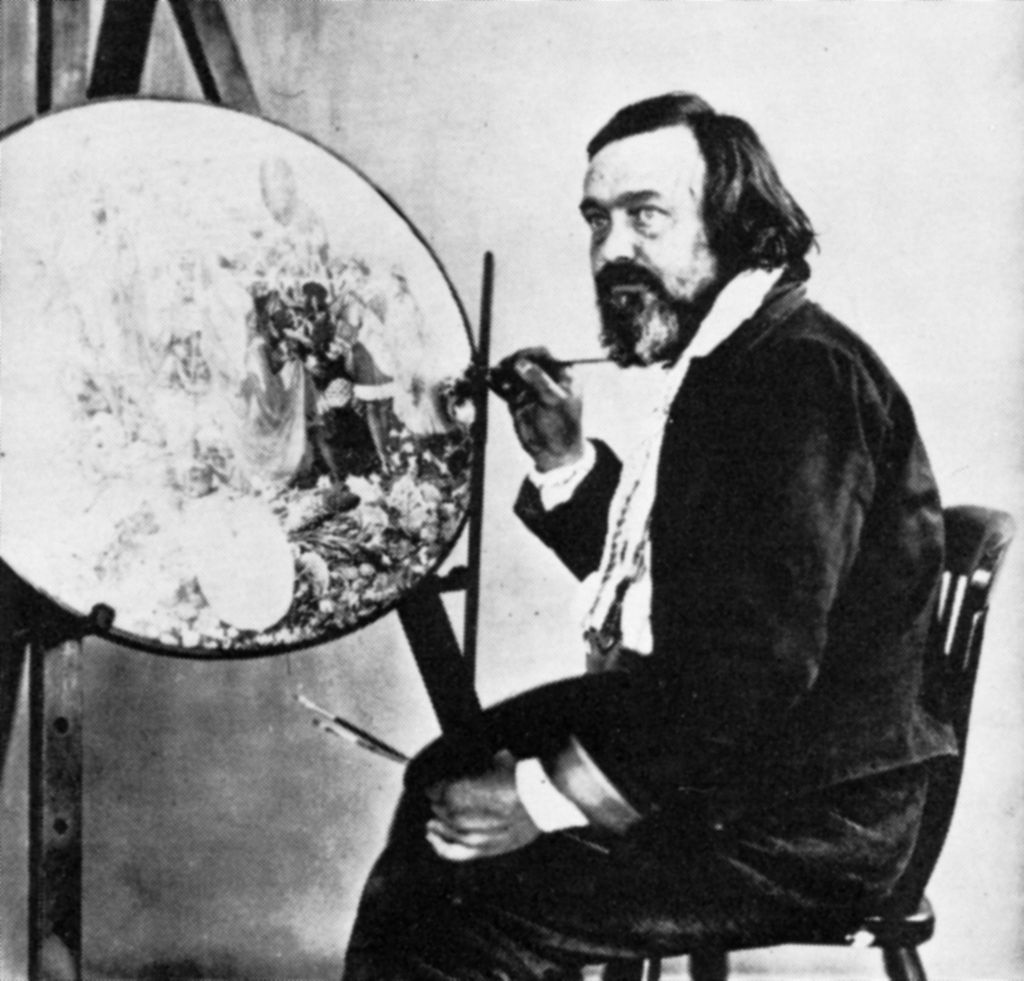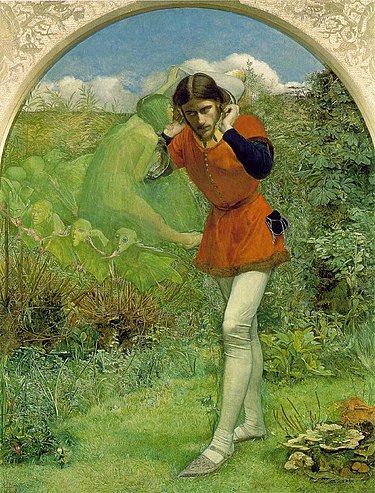
Wikimedia Commons
Fairy painting is a genre of art and illustration particularly fashionable during the reign of Queen Victoria (1837–1901), featuring small imaginary human-like creatures with magical powers, often with wings. It was especially popular during the period 1840–1870, when its major practitioners included Joseph Noel PatonScottish artist, illustrator, antiquary, poet and sculptor.Scottish artist, illustrator, antiquary, poet and sculptor. and the “criminally insane” Richard Dadd
English painter of the Victorian era , noted for his depiction of fairies and other supernatural subjects. Most were completed while he was an inmate of Bedlam and Broadmoor lunatic asylums.,[1] who produced most of his work while incarcerated in the Bethlem psychiatric hospital for the murder of his father.[2]
The Victorian age exhibited a fascination with fairies and the supernatural,[3] but the popularity of the genre was also fuelled by the desire for new kinds of art by a growing middle-class audience.[4] It was inspired by myth and legend, and in particular William Shakespeare’s play A Midsummer Night’s Dream. Shakespeare’s The Tempest also inspired the co-founder of the Pre-Raphaelite BrotherhoodGroup of English artists formed in 1848 to counter what they saw as the corrupting influence of the late-Renaissance painter Raphael., John Everett Millais, to produce his series of fairy paintings, culminating in his Ferdinand Lured by Ariel of 1849. But the earliest artists considered to have contributed to the genre predate the Victorian era. Henry Fuseli
Swiss-born British Romantic artist (1741–1825), who established a reputation for his paintings depicting the horrifying and fantastic., William Blake and Joseph Turner are among those who produced pre-Victorian examples of works that are today thought of as fairy paintings.[3]

Wikimedia Commons
Cultural changes were also an important factor. Industrialisation was uprooting longstanding traditions, and rapid advances in science and technology, especially the invention of photography, left some feeling discomfited and confused. The shift of attention to mythological and fantasy elements, and in particular the world of fairies, offered an escape from those tensions. “No other type of painting concentrates so many of the opposing elements of the Victorian psyche: the desire to escape the drear hardships of daily existence; the stirrings of new attitudes toward sex, stifled by religious dogma; a passion for the unseen; the birth of psychoanalysis; the latent revulsion against the exactitude of the new invention of photography.”[5]
Fairy painting reached its “final flowering” in the illustrated books of Arthur Rackham, just before the outbreak of the First World War in 1914.[3]
See also
- Victorian paintingVictorian painting refers to the distinctive styles of painting in the United Kingdom during the reign of Queen Victoria (1837–1901).
